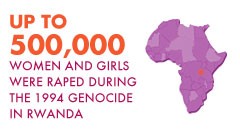
September 13, 2011 | Economic Opportunity
How Women Can Save Microfinance
Studies have long shown that more women in leadership can help a company’s bottom line. The microfinance industry needs to catch on quick, says the president of Women’s World Banking.
By Mary Ellen Iskenderian
Over the past decade, it’s become common knowledge that microfinance is one of the few industries in which women rule. Some of the sector’s early founders were women, and for years they’ve made up the majority of borrowers—using small loans, sometimes as little as $100, to start small businesses, invest in education, and reinvest in their communities. But much as in the corporate world, something else has happened as the microfinance industry has exploded: the women who were crucial to its creation have begun to disappear from the top rungs of organizational leadership.
As the president of Women’s World Banking, a global network of 39 microfinance organizations, I’ve long believed that gender diversity is crucial to business success. Studies show that companies with more women at the top produce a better bottom line; having more women at the top can also affect the diversity of decision making. Yet when it comes to microfinance, we face a crossroads: despite the rapid growth of the industry over the past 35 years—there are now more than 3,600 microfinance institutions worldwide—the number of women in upper management has decreased. Even within our own network of organizations, which have a commitment to serving women, the number of women in senior management positions has dropped 26 percent over the last eight years. To borrow from corporate marketing strategy, wouldn’t it make more sense for microfinance institutions to mirror their market?
Which brings us to our new study on the importance of gender diversity in microfinance institutions. Over the past five years, Women’s World Banking has been evaluating the practices of a number of firms in Pakistan, Bangladesh, and India—the birthplaces of microfinance. What we’ve come up with are eight recommendations—within recruitment, retention, promotion, and professional development—to help companies assess their own levels of gender diversity, and improve them, to ultimately increase the bottom line. This is not to say that men can’t grasp the needs of a female client base. But, rather, having women’s voices at the decision-making table can lead to outcomes that are more responsive to women clients—as well as attract new ones. These concepts seem even more relevant today as the microfinance industry, particularly in South Asia, is being forced to explore what it means to focus on customers and reexamine its commitment to the mission of poverty alleviation.
More than ever before, microfinance institutions must be equipped to make good decisions—and decisions are always enhanced by the sharing of diverse perspectives. When a majority of your clients are women, it makes sense for women's voices to contribute to the next generation of products you will offer. It is vital to reverse the trend and help microfinance institutions attract, train, and retain talented women.
In the corporate world, not everyone agrees that the presence of women at the top should be imperative. But in our industry, it's very hard to argue that it’s anything less than critical.
Mary Ellen Iskenderian is the president of Women’s World Banking, the only microfinance network with an explicit focus on women. By providing innovative approaches that can be replicated and scaled, Women’s World Banking aims to prove that investing in women directly can be profitable, and can also generate positive social benefits.